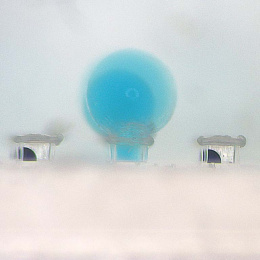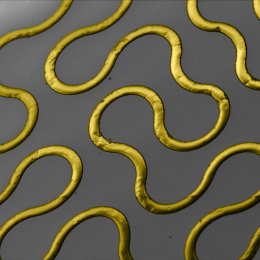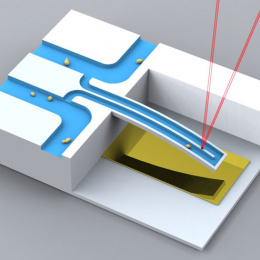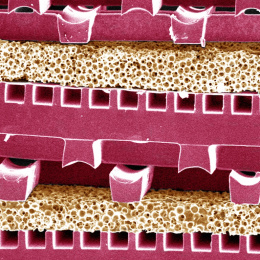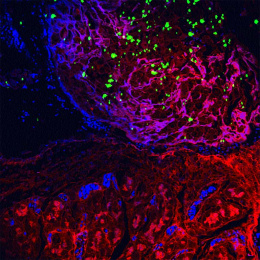Peptide-Coated Microneedle Patches for Immune Cell Monitoring and Modulation 6
Peptide-Coated Microneedle Patches for Immune Cell Monitoring and Modulation 6
Sasan Jalili, David Mankus, Abigail Lytton- Jean, Darrell J Irvine
Koch Institute at MIT
The current intradermal injections require skilled personnel to administer them, and even then, delivery efficiency is about only 30%. By switching from intradermal injections to a quickly applied microneedle patch, we aim to simplify the process while increasing the precision. Our microneedle patches can be coated with peptides and used for noninvasive, environmentally-friendly diagnosis of cancer (e.g. ovarian cancer), infectious disease (e.g. Tuberculosis), and autoimmunity (e.g. Lupus). In this case, our image shows microneedle skin patches coated with PPD, a peptide cocktail routinely used in clinics for skin-based diagnosis of Mycobacterium tuberculosis infection, the most endemic global pathogen, infecting one third of the population and remains the second leading cause of death from a single infectious agent, after HIV.
We took this image to first confirm the homogenous distribution of the coating solution we have developed to cover the microneedle tips with drugs/vaccines/diagnostics. We also wanted to make sure that microneedle morphology remains intact after coating procedure. These SEM images confirm that the peptide cocktail we used in this experiment has been evenly coated on the tip of the microneedles and remains at the tip upon drying without spreading on the patch base. Using these skin patches we are able to locally monitor and engineer the tissue-resident immunity that is often neglected in conventional methods.


